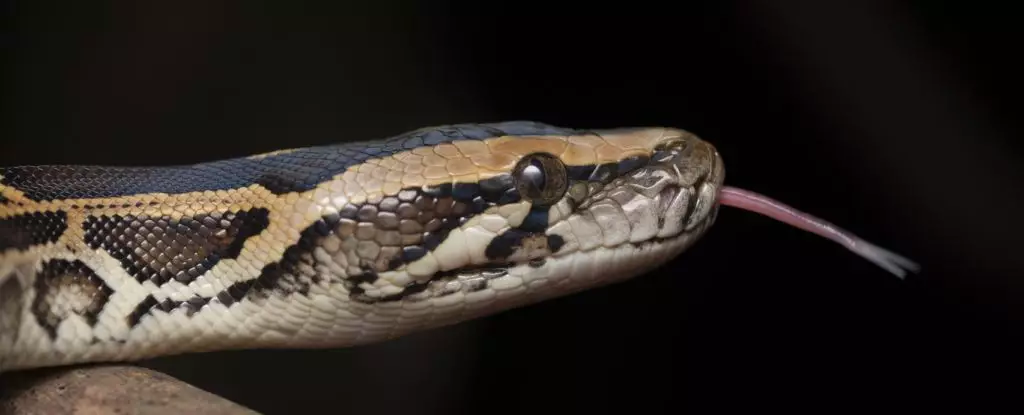In a world where animals have traditionally been boxed into narrow biological roles—carnivores tearing flesh and herbivores munching leaves—the manner in which certain snakes digest and absorb their prey’s bones challenges this simplistic view. The discovery of a novel cell type in Burmese pythons’ intestines is a striking testament to evolutionary ingenuity. This isn’t just about snakes being capable of gulping down entire prey; it’s about a biological marvel that redefines what we thought was possible in vertebrate digestion. Far from a passive process, the python’s intestinal lining harbors specialized cells capable of actively managing an overload of critical minerals—calcium and phosphorus—that, in other animals, would spell disaster.
Unlike other herbivores or omnivores, snakes do not regurgitate or pass bones in recognizable form. Instead, they manage to neutralize and absorb what would otherwise be an overwhelming influx of mineral content. This indicates a highly evolved system, one that incorporates cells fine-tuned for extreme tasks. To consider this merely as a feeding adaptation is to overlook how profound this biological innovation truly is. It reflects a shift in our understanding of the limits of vertebrate physiology and the adaptive potential of digestive tissues.
Questioning Conventional Biological Wisdom
The existence of these specialized cells in Burmese pythons disrupts the long-standing notion that vertebrate intestines are mostly passive absorbers. Instead, they reveal a complex, actively regulated system that prevents mineral overload—a problem inherent in their unique feeding behavior of ingesting entire prey, bones included. Previously, it was assumed the bones simply passed through or caused health issues, but this discovery suggests a sophisticated internal mechanism at play. The implications go beyond snakes: other species, especially marine predators that consume bony fish or aquatic mammals, could possess similar, yet undiscovered, cellular adaptations.
This challenges the idea that vertebrates have a one-size-fits-all approach to digestion. It also raises questions about the evolution of intestinal tissues. Have these cells evolved anew in snakes, or are they remnants of an ancient, broader vertebrate trait? The fact that similar cells are found in Gila monsters hints at a shared evolutionary strategy, but the full story remains elusive. It may be that evolution has sculpted multiple solutions to the same problem—handling excess calcium and phosphorus—across different lineages.
The Significance for Broader Ecological and Medical Research
Understanding how snakes can digest entire bones unlocks new potential for comparative biology and medicine. If these specialized cells can sequester and excrete excess minerals efficiently, they might inspire treatments for mineral overload disorders in humans or animals. Additionally, they could provide insight into bone health and skeletal maintenance. More intriguing is the possibility of discovering similar cellular mechanisms in other animals with extraordinary diets—marine predators, for instance—implying a convergent evolution of extremophile digestion strategies.
From an ecological perspective, these findings emphasize how predators and prey are locked in an ongoing evolutionary arms race—one that pushes biological systems to their limits. If snakes can evolve such specialized digestion to exploit a niche of completely consuming prey, it underscores nature’s relentless creativity in overcoming biological constraints.
Beyond the Surface: The Ethical and Scientific Implications
While this discovery sparks scientific wonder, it also invites caution. Human fascination with biological extremes sometimes encourages a tendency to romanticize or exploit these findings without understanding the broader implications. If we begin to look at biological “super-abilities” as models for human engineering, we risk oversimplifying complex ecological and evolutionary processes. Nature’s solutions are nuanced, delicate, and context-dependent.
Nevertheless, embracing these insights can lead to a more balanced appreciation of biological diversity and ingenuity. It serves as a reminder that evolution continuously rewires the fundamental processes of life, often in ways we never envisioned. Recognizing and studying these specialized cells not only broadens our scientific horizons but also demands humility—acknowledging how much remains unknown about the intricacies of life on Earth.
The latest revelations about snake intestinal cells challenge the very assumptions we hold about vertebrate digestion. They unveil an astonishing evolutionary breakthrough—one that grants snakes the seemingly impossible ability to fully digest bones and regulate mineral overload. This discovery underscores nature’s remarkable capacity for adaptation and reminds us of the vast, often hidden, complexities that underpin even seemingly simple biological processes.

